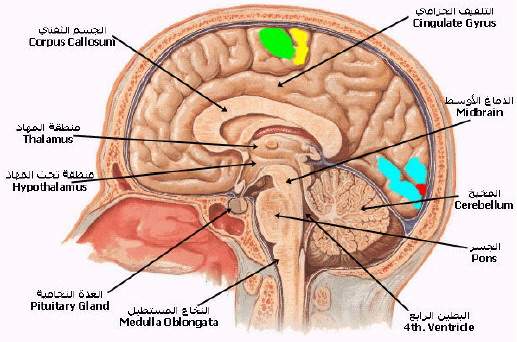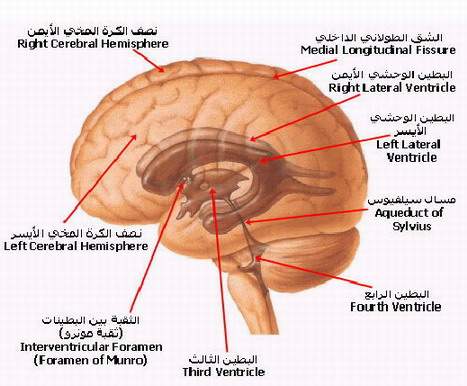قلم الدكتورة نها أبو كريشة
)
قال الله تعالى
فَلَمَّا رَأَيْنَهُ أَكْبَرْنَهُ وَقَطَّعْنَ
أَيْدِيَهُنَّ وَقُلْنَ حَاشَ لِلّهِ مَا هَـذَا بَشَرًا إِنْ هَـذَا
إِلاَّ مَلَك كَرِيمٌ(
سورة يوسف
في التفسير :
لما رأت النسوة يوسف بهتن من جماله وجرحن أصابعهن بالسكاكين لفرط
ذهولهن. (ابن كثير،الصابوني)
كيف يعمل شد أو جذب الانتباه على تقليل الشعور بالالم؟
Distraction
ذهول (شرود الذهن)
يدعى أحيانا
تغيير التركيز
الادراكي،
وهي استراتيجية تغير اتجاه التركيز والانتباه لمؤثر آخر (بحيث يستغرق
ادراك الشخص في المؤثر الآخر ) مما ينتج عنه عزل وحماية الشخص من
الشعور بالألم.هذه المؤثرات قد تكون داخلية مثل احلام اليقظة أو خارجية
مثل مشاهدة التلفاز.
المؤثر الأكثر فاعلية هو ذلك
المؤثر الرائع الاسثنائي المثير
المتجدد الذي يثير معظم أو كل الحواس (السمع،الرؤية،التذوق ،اللمس،
الشم) عند الشخص.
تم إجراء تجربة استخدام العلاج بشد الانتباه برؤية
مناظر خلابة من الطبيعة وسماع شريط يحتوي على أصوات رائعة من الطبيعة
في التخفيف من الآلام أثناء عملية منظار الشعب الهوائية وذلك بالاضافة
للعلاج المعتاد. وقورنت هذه المجموعة من المرضى بمجموعة أخرى ضابطة لم
تتلق العلاج الاضافي بجذب الانتباه (تغيير التركيز الادراكي).
وخلص هذا البحث الذي تم عمله في المستشفى التعليمي
(جون هوبكينز) في بالتيمور و نشر في
مجلة (Chest.
2003; 123:941-948.)
أن العلاج بشد الانتباه مع العلاج التقليدي أدى الى
تقليص الشعور بالالم بصورة ذات دلالة احصائية وأوصى البحث بأن يقوم
الاطباء باستخدام الاجراءات الطبيعية بالاضافة الى المسكنات المعتادة.
كما نشر موقع
BBC
على شبكة الانترنت هذا البحث تحت عنوان
العودة الى الطبيعة لتخفيف الالم وقد ذيل هذا بقول الطبيب جيل
هانكوك (نحن نقوم بتعليم مرضانا الاسترخاء باستخدام المشاهد المناظر
الخلابة والموسيقى الرائعة و هذا جزء أساسي في عملنا حيث أنه ثبت أن
المناظر الخلابة تؤدي الى ازالة التوتر النفسي و البدني اللذين يسببان
الالم.
كيف يعمل شد الانتباه على التخفيف من الاحساس بالالم ؟
باستخدام الاشعات الوظيفية للمخ تلك التي تظهر الارتواء
الدماغي والتمثيل الغذائي للخلايا العصبية ثبت أنه أثناء استخدام جذب
الانتباه يحدث انخفاض في مستوى نشاط أماكن معينة في المخ(تلك الاماكن
التي يتم فيها استقبال الاحساس بالالم مثل منطقة المهاد،القشرة الحسية
والتلفيف الحزامي انظر الصورة


كما يحدث زيادة في نشاط الخلايا العصبية في المنطقة
الرمادية حول مسال سيلفيوس و هذا النشاط يؤدي الى افراز مادة
الاندورفين المسكنة للالم.

المصادر العلمية:
1.Gregory B. Diette, MD, MHS; Noah Lechtzin, MD, MHS; Edward Haponik,
MD, FCCP; Aline Devrotes, RN and Haya R. Rubin, MD
Distraction Therapy with Nature
Sights and Sounds Reduces Pain during Flexible Bronchoscopy*
A Complementary Approach to Routine Analgesia, PhD (Chest.
2003;123:941-948.) © 2003.
American
College of Chest Physicians
2. Allport A: Visual attention. In
Foundation of Cognitive Science. Edited by Posner MI.
Hillside, NJ: Erlbaum; 1989:631–682.
3. Wickens CD: Processing resources
in attention. In Varieties of Attention. Edited by
Parasuraman R, Davies DR. Orlando: Academic; 1984:63–102.
4. Leventhal H: I know distraction
works even though it doesn’t.
Health Psychol
1992, 11:208–209.
5. McCaul KD, Mallott JM:
Distraction and coping with pain.
Psychol Bull
1984, 95:516–533.
How Does Distraction Work in the
Management of Pain? • Johnson
95
6.Fernandez E, Turk DC: The utility
of cognitive coping strategies for altering pain perception: a
meta-analysis. Pain 1989, 38:123–135.
7.McCaul KD, Monson N, Maki RH:
Does distraction reduce
pain-produced distress among college students? Health Psychol
1992, 11:210–217.
8.Johnson MH, Breakwell G, Douglas
W, Humphries S: The effects of sensory detection distractors on
different measures of pain: How does
distraction work? Br J Clin Psychol 1998,
37:141–154.
9.Arntz A, De Jong P: Anxiety
attention and pain. J Psychosom Res
1993, 37:423–432.
10.Bushnell CM, Villemure C, Duncan
GH: Psychophysical and neurophysiological studies of pain modulation
by attention. In Psychological Methods of Pain Control: Basic
Science and Clinical Perspectives. Edited by Price DD, Duncan
CM. Seattle: IASP Press; 2004:99–116.
This chapter provides a good
summary of the evidence for the modulation of physiologic and
neurophysiologic activity by attention.
11.Morley S, Biggs J, Shapiro D:
Attention management in
chronic pain: a treatment manual.
http://www.leeds.ac.uk/
medicine/psychiatry/attman/introduction.htm. Accessed
September 5, 2004.
This web site contains the entire
treatment manual for attention manage-
ment. The manual’s title indicates
that it is suitable for chronic pain. However, the techniques
provided also are appropriate for acute pain.
12. Morley S, Shapiro DA, Biggs J:
Developing a treatment manual for attention management in chronic
pain. Cogn Behav Ther
2004, 33:1–11.
13. Hayes RL, Dubner R, Hoffman DS:
Neuronal activity in medullary dorsal horn of awake monkeys trained
in a thermal discrimination task. II: behavioral responses to
thermal and
mechanical stimuli. J
Neurophysiol 1981, 46:428–443.
14.Bandura A, O’Leary A, Taylor CB,
et al.: Perceived self-efficacy
and pain control: opioid and
nonopioid mechanisms. J Pers Soc Psychol 1987,
53:563–571.
15.Porro CA: Functional imaging and
pain: behavior, percep-
tion, and modulation.
Neuroscientist 2003, 9:354–369.
16.Rainville P: Brain mechanisms of
pain affect and pain modu-lation. Curr Opin Neurobiol 2002,
12:195–204.
17.Tracey I, Ploghaus A, Gati JS,
et al.: Imaging attentional modu-
lation of pain in the
periaqueductal grey in humans. J Neuro-
sci
2002, 22:2748–2752.
18.Davis KD, Taylor SJ, Crawley AP,
et al.: Functional MRI of pain and attention-related
activations in the human cingulated cortex. J Neurophysiol
1997, 77:3370–3380.
19.Bantick SJ, Wise RG, Ploghaus A,
et al.: Imaging how attention
modulates pain in humans using
functional MRI. Brain 2002,
125:310–319.
20.Seminowicz DA, Mikulis DJ, Davis
KD: Cognitive modulation of pain-related brain responses depends on
behavioral strategy. Pain 2004, 112:48–58.
21.Tracey I, Ploghaus A, Gati JS,
et al.: Imaging attentional modu-lation of pain in the
periaqueductal grey in humans. J Neuro-
sci
2002, 22:2748–2752.